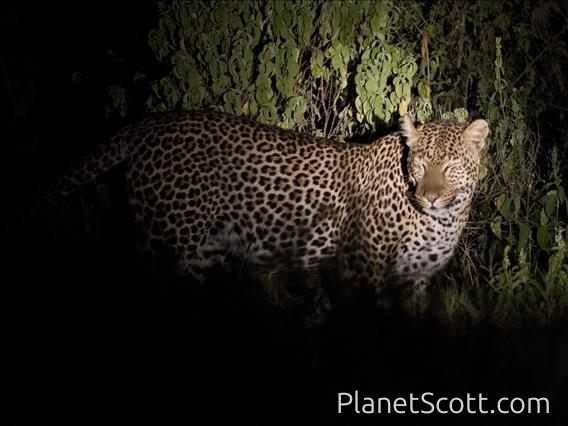Leopard (Panthera pardus)

Leopard (Panthera pardus)
×


Leopard (Panthera pardus)
About Leopard (Panthera pardus)
- Kingdom: Animals
- Phylum: Chordates
- Class: Mammals
- Order: Carnivorans
- Family: Felidae
The leopard is one of the five extant cat species in the genus Panthera. It has a pale yellowish to dark golden fur with dark spots grouped in rosettes. Its body is slender and muscular, reaching a length of 92–183 cm (36–72 in) with a 66–102 cm (26–40 in) long tail and a shoulder height of 60–70 cm (24–28 in). Males typically weigh 30.9–72 kg (68–159 lb), and females 20.5–43 kg (45–95 lb).
Source: Wikipedia
Visits
-
2001-06-30
South Luangwa National Park, ZambiaOn our last night before flying back to Lusaka, we saw a leopard on the night safari. Soon thereafter, a second leopard joined the scene. This seemed to be a very rare event. It is even possible that we saw three leopards as we lost sight of the first leopard before seeing the other two, but in retrospect, I think the driver just moved to the spot on the road where he expected it to emerge. -
2003-03-05
Tangire National Park, TanzaniaSeen from the road resting in a tree. -
2006-01-13
Bandhavgarh National Pak, IndiaSeen in the middle of the road, and then observed hiding in some brush for a few seconds before it ran off. A rare sighting here. -
2013-10-25
Lake Nakuru National Park, Kenya

